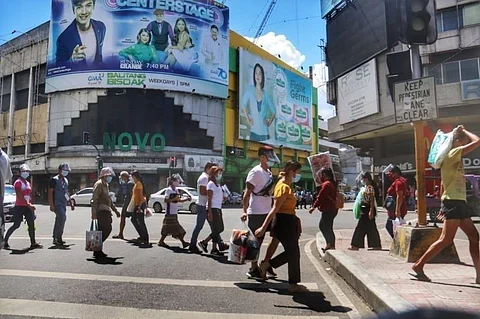

AFTER being flagged among the high-risk regions for several weeks, Central Visayas is now classified as moderate risk in terms of coronavirus disease 2019 (Covid-19) case growth.
However, Central Visayas is among eight regions being monitored closely because of rising deaths from Covid-19 as of September 5, Department of Health (DOH) Undersecretary Maria Rosario Vergeire said Monday, September 6, 2021.
Central Visayas had the second highest average deaths per day in August 2021 at 23, just one less than the 24 daily average in Central Luzon.
The provinces of Cebu and Bohol as well as the highly urbanized cities of Cebu and Lapu-Lapu also remain on Alert Level 4 while Mandaue City is on Alert Level 3.
Areas under Alert Level 4 are those with moderate to critical risk classification in terms of case counts and more than 70 percent healthcare utilization regardless of the presence of the highly contagious Delta variant.
Central Visayas was further flagged for a high average daily attack rate of 10.82 per 100,000 population in the last 14 days from August 23 to September 5, 2021, DOH data showed.
For the same period, DOH data also showed that Central Visayas was the only region that posted a negative growth rate in new Covid-19 cases. Aside from Cebu and Bohol, other provinces in Central Visayas are Negros Oriental and Siquijor.
New infections in Central Visayas declined by 14 percent in the last two weeks compared to cases in the previous two weeks, which grew by 23 percent. Other regions continued to post positive two-week growth rates ranging from 6.0 percent to 107 percent.
The DOH report also showed that Central Visayas’s healthcare utilization was at moderate risk on September 3, with only 61.87 percent of regular beds occupied and 67.65 percent of intensive care unit (ICU) beds used.
Slightly more than half, or 56.97 percent, of the mechanical ventilators in the region were also used.
Vergeire, however, acknowledged that their data is different from the statistics on the ground amid reports of overwhelmed health systems in some regions.
The entire country remained classified as high risk and 11 out of 17 regions were still considered high risk.
These are National Capital Region, Calabarzon, Cagayan Valley, Cordillera, Central Luzon, Northern Mindanao, Ilocos, Davao, Caraga, Western Visayas and Soccsksargen.
Among these regions, six were flagged for high risk bed and ICU utilization rates, namely, Calabarzon, Cagayan Valley, Cordillera, Central Luzon, Northern Mindanao and Caraga.
Three other regions — National Capital Region, Western Visayas and Soccsksargen — were flagged for high risk ICU utilization.
Nationwide, ICU occupancy was high risk at 74.35 percent on September 3.
Eight regions, meanwhile, were being monitored because of increasing deaths. Aside from Central Visayas, the other regions are Central Luzon, National Capital Region, Calabarzon, Caraga, Soccsksargen, Ilocos and Northern Mindanao.
In August, the highest average deaths per day were in Central Luzon (24), Central Visayas (23), NCR (18) and Calabarzon (17).
In the first five days of September, Central Luzon still had the highest at 11 daily average, followed by NCR and Calabarzon with five each, and Central Visayas with four average deaths per day. (Marites Villamor-Ilano / SunStar Philippines)